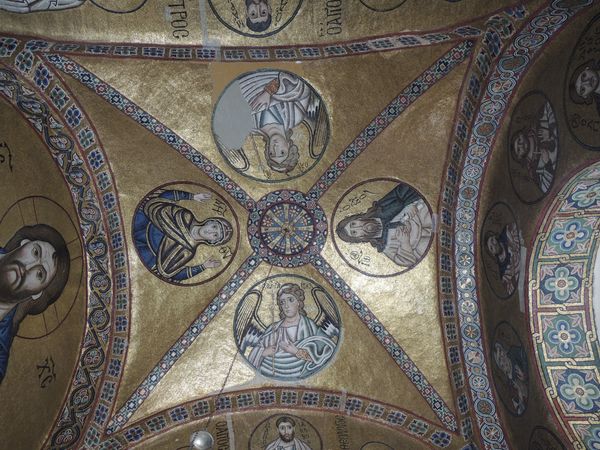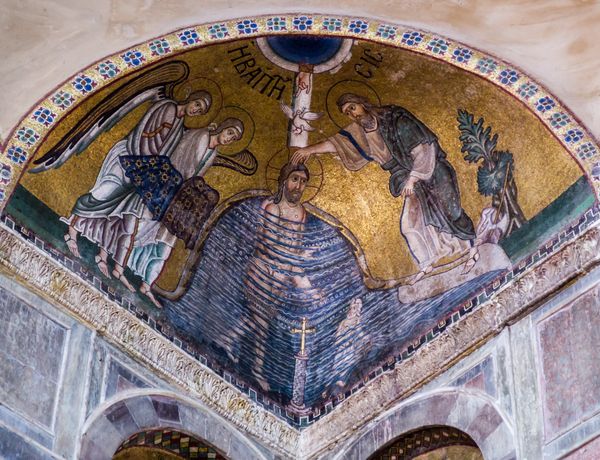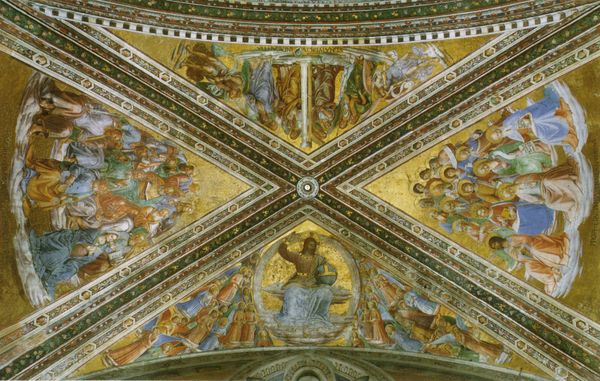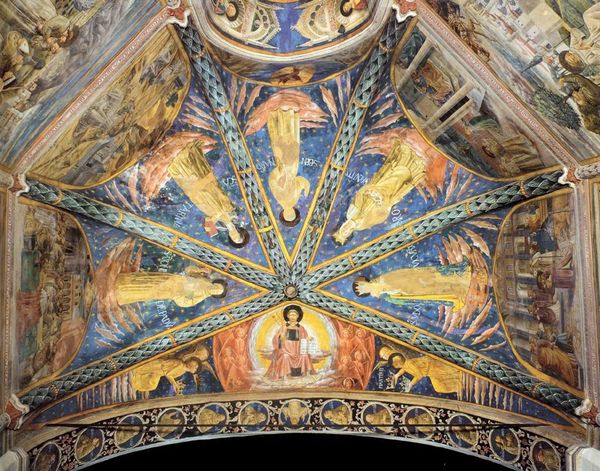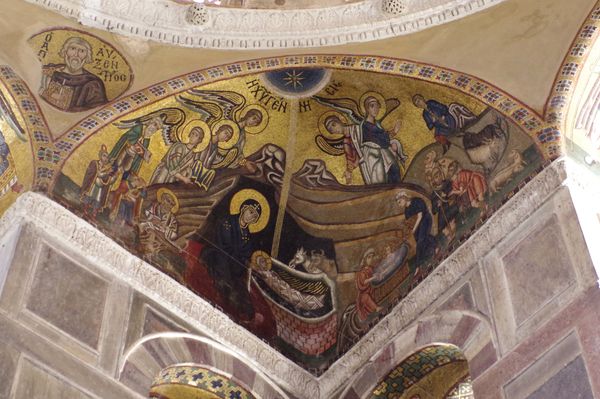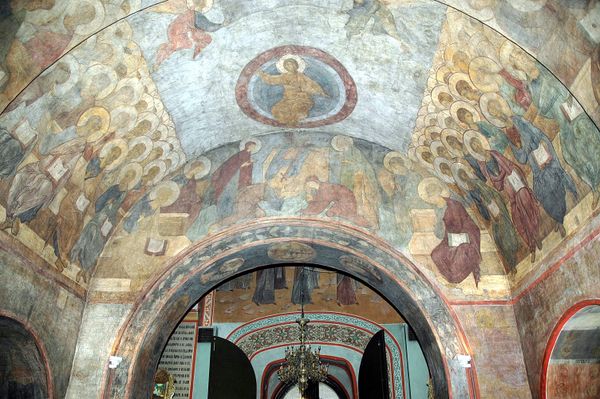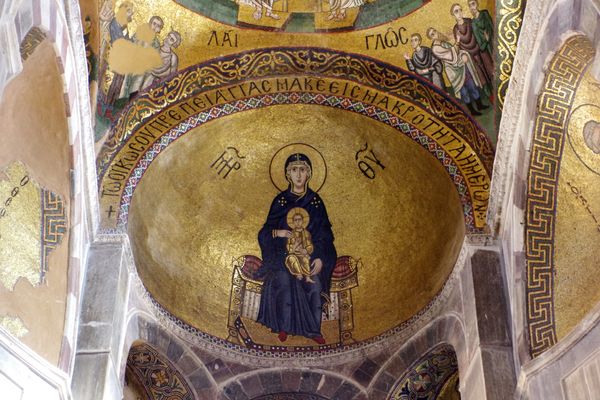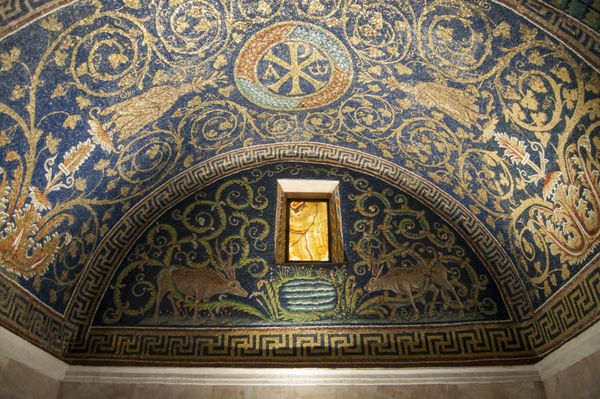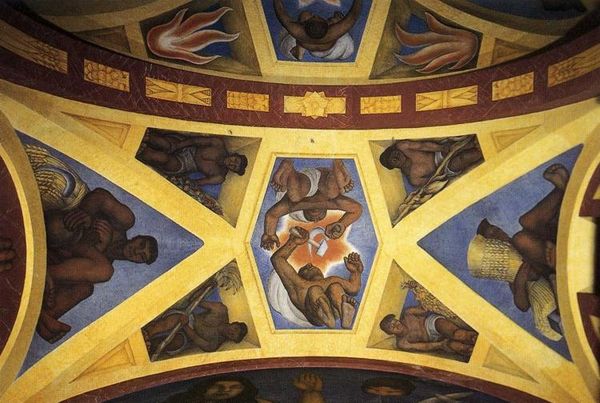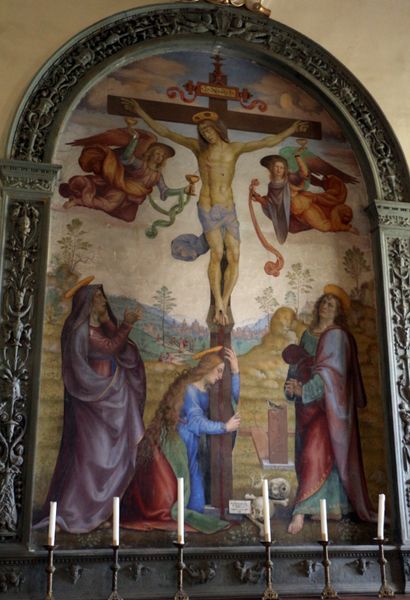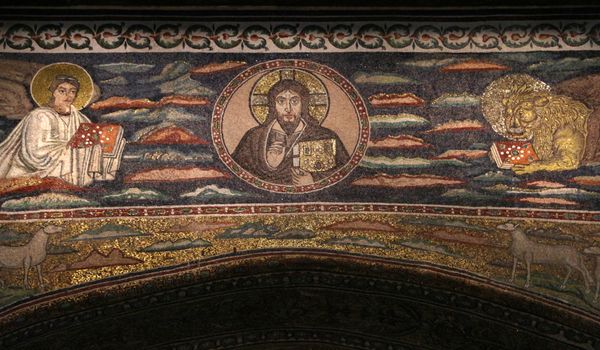
mosaic, tempera, architecture
#
mosaic
#
byzantine-art
#
medieval
#
tempera
#
sculpture
#
landscape
#
holy-places
#
figuration
#
historic architecture
#
traditional architecture
#
geometric
#
arch
#
architecture
#
historical building
Copyright: Public domain
Curator: What strikes me immediately is the sheer luminosity, that overwhelming field of tesserae creating a vibrant, almost otherworldly effect. Editor: Indeed. We're looking at the apse mosaic in the Basilica of Sant'Apollinare in Classe, Ravenna, dating to approximately 549 AD. It's a stunning example of Byzantine artistry, particularly in its manipulation of light and color. The chosen media itself, each piece hand placed, speaks to a labor-intensive construction that demanded skilled artisans, specifically trained in material practice. Curator: Absolutely, and consider the symbolic language. The golden background, of course, represents divine light, and the meticulous arrangement of figures within a landscape, creates a strong vertical axis, drawing the eye upwards. The floating saints defy gravity with elongated forms expressing a very distinct ideal form and an intended ethereal experience for the faithful below. Editor: From my perspective, it’s essential to recognize that mosaic production required access to and control of valuable raw materials—stone, glass, pigments—that each demanded sophisticated workshops. The uniformity across that golden expanse suggests resources pooled and managed. Furthermore, what about that very tactile engagement with material? Each worker imbeds themselves in history through those individual tesserae. Curator: True, but consider the overall design. The carefully balanced composition reinforces the hierarchy of figures, St. Apollinaris is so central, mediating between the divine realm above and the earthly sheep representing the faithful below. The formal organization is not merely decorative; it communicates profound theological concepts through carefully calibrated design elements. Editor: However, even theologically-motivated projects were made, transported and paid for. Labor and accessibility can never be divorced from any object of devotion, sacred or secular. The mosaic exists as the ultimate example of pre-industrial cooperative production. Each anonymous artist poured labor, sweat and artistry, as evidenced in the variance of hues throughout the field. Curator: I concede the importance of those factors, but one cannot ignore how formal qualities interact with religious symbolism in a meaningful fashion to impart profound visual messaging and inspire piety through sophisticated abstraction and geometric harmony. Editor: Yes, well, perhaps this mosaic becomes more compelling through our discussions regarding both its material origins, social connections, and its manifest composition. Curator: Perhaps indeed! Its enduring impact speaks to layers of interpretation we've just touched on.
Comments
No comments
Be the first to comment and join the conversation on the ultimate creative platform.

